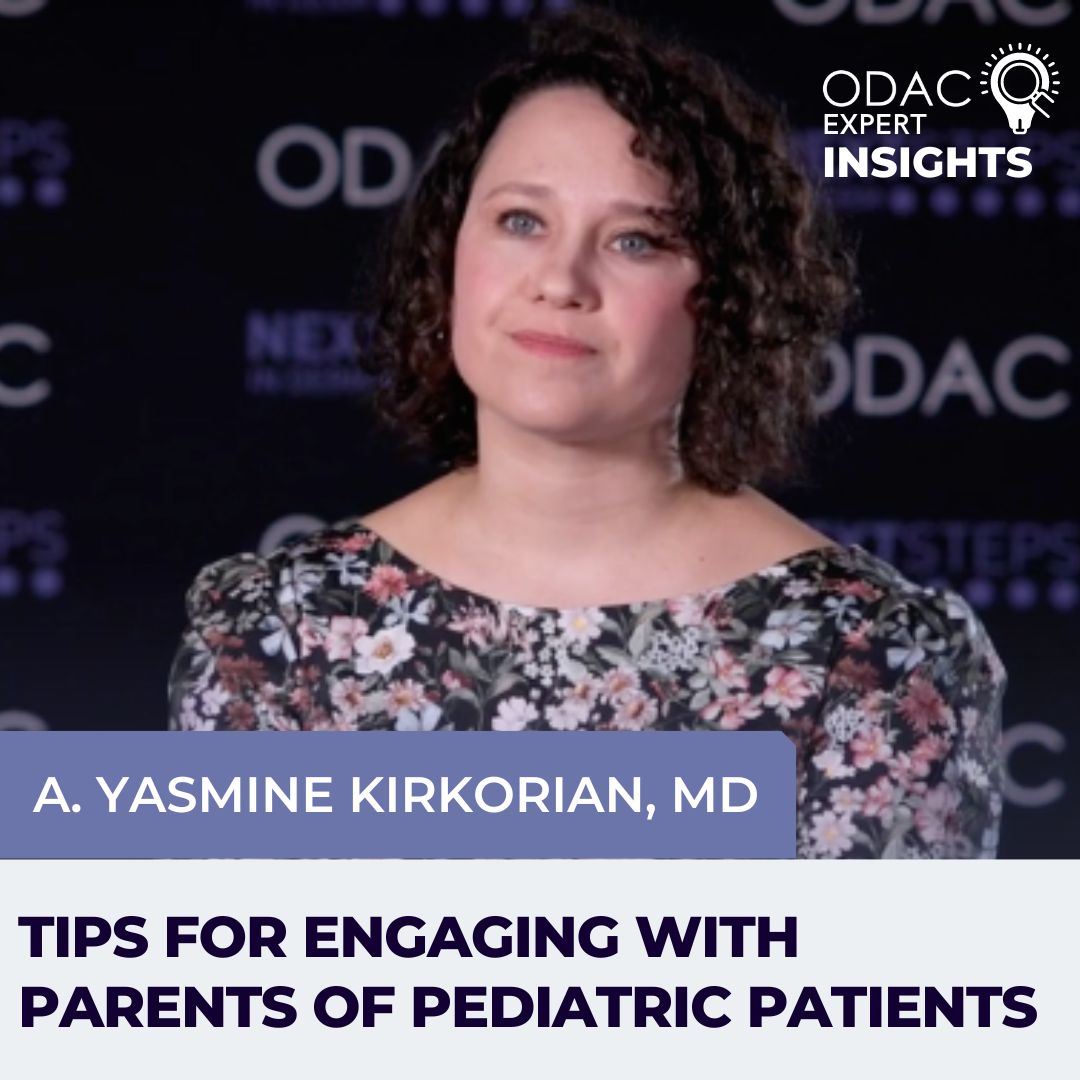Next Steps in Derm, in partnership with ODAC Dermatology, Aesthetic & Surgical Conference, interviewed Dr. Yasmine Kirkorian, chief of dermatology at Children’s National Hospital. When treating children, clinicians not only have the child as the patient but also the parent. Watch and learn Dr. Kirkorian’s top tips for engaging with parents of pediatric patients. Hear why she says letting parents talk at the initial visit saves time in the long run. Find out her strategies for engaging with parents who are skeptical of certain treatments and how to build effective partnerships with parents.
Further Reading
If you want to read more about pediatric dermatology topics, check out the following articles published in the Journal of Drugs in Dermatology:
ABSTRACT
Background: Acne vulgaris (acne) is a common, complex, multifactorial disorder. Various expressions of acne in childhood can be categorized by age, severity, and pubertal status.
Objective: To improve pediatric acne patients’ outcomes, various expressions of pediatric acne to educate and tailor nonprescription acne treatment and skincare using cleansers and moisturizers were defined and discussed.
Methods: An expert panel of pediatric dermatologists and dermatologists reviewed and discussed nonprescription acne treatment and skincare literature. The results from the literature searches were used together with the panel’s expert opinion and experience to adopt various expressions of pediatric acne and prevention, treatment, and maintenance of the condition using nonprescription acne treatment and skincare.
Results: The panel agreed on sixteen acne patient profiles addressing various age categories of pediatric acne: neonatal acne: birth to ≤ 8 weeks; infantile acne: 8 weeks to ≤1 year; mid-childhood acne: 1 year to <7 years; preadolescent acne: ≥7 to 12 years; adolescent acne: ≥12 to 19 years or after menarche for girls. Nonprescription acne treatment and skincare products containing lipids such as ceramides play an important role in monotherapy, adjunctive, and maintenance treatment; however, their role in pediatric acne is not well defined and requires more studies.
Conclusion: Pediatric acne deserves more attention from healthcare providers treating children regarding differential diagnosis, treatment, and maintenance using nonprescription acne treatment and skincare.
Treatment of Impetigo in the Pediatric Population: Consensus and Future Directions
ABSTRACT
Background: Impetigo is a common contagious superficial bacterial skin infection. Treatment of localized lesions can be achieved through topical antibiotics. Oral antibiotics are reserved for extensive disease. Increasing antimicrobial resistance to existing therapies have raised concerns. Antimicrobial stewardship, achieved through the responsible use of antibiotics, is an important measure to re-duce bacterial resistance. This review highlights treatment options for impetigo and shares consensus statements to help guide the management of impetigo in the pediatric population.
Objective: An expert panel of dermatologists and pediatricians convened in February 2019 to establish evidence-based consensus on the management of impetigo in the pediatric patient population.
Methods: The consensus was created in accordance with the Appraisal of Guidelines, Research and Evaluation (AGREE) II instrument. Prior to the consensus meeting, a systematic literature review was conducted, with the selected literature deemed clinically relevant to the consensus statements. Statements were further refined and assessed systematically following established standards. The consensus process consisted of a modified Delphi approach. The consensus was established through a minimal 75% “agree” rate.
Results: Thirteen consensus statements were developed addressing clinical challenges, existing treatment options and their limitations, and new therapeutic alternatives.
Conclusion: Bacterial resistance to antimicrobials commonly used in treating impetigo has been reported. Antimicrobial stewardship is critical to optimize patient outcomes and to prevent the development of resistance. Healthcare providers should be aware of local resistance patterns in impetigo to help guide therapy. The use of newer safe and effective topical antibiotic alternatives as a first-line treatment should be an important step in antimicrobial stewardship.
Did you enjoy this video interview? Find more here.

